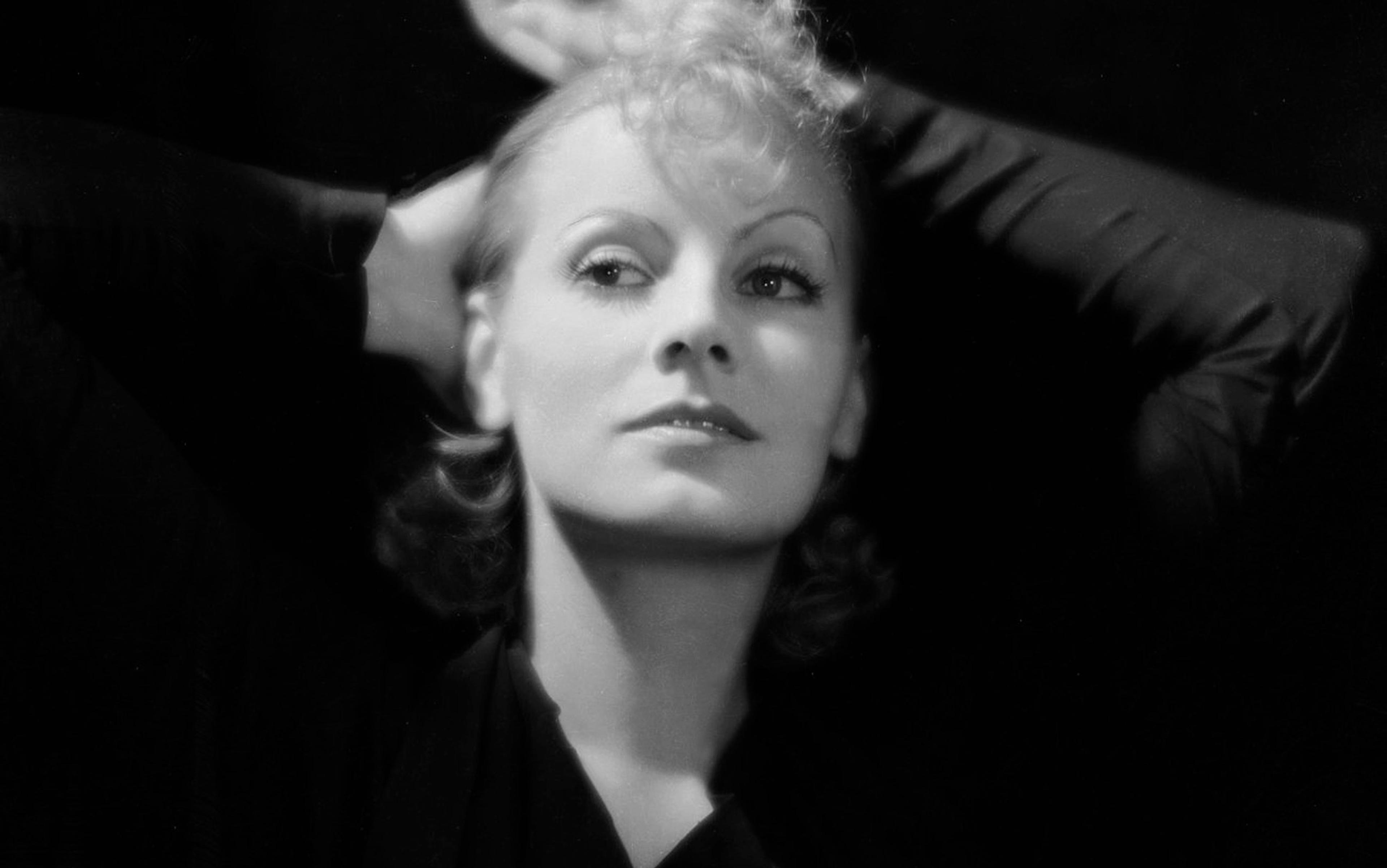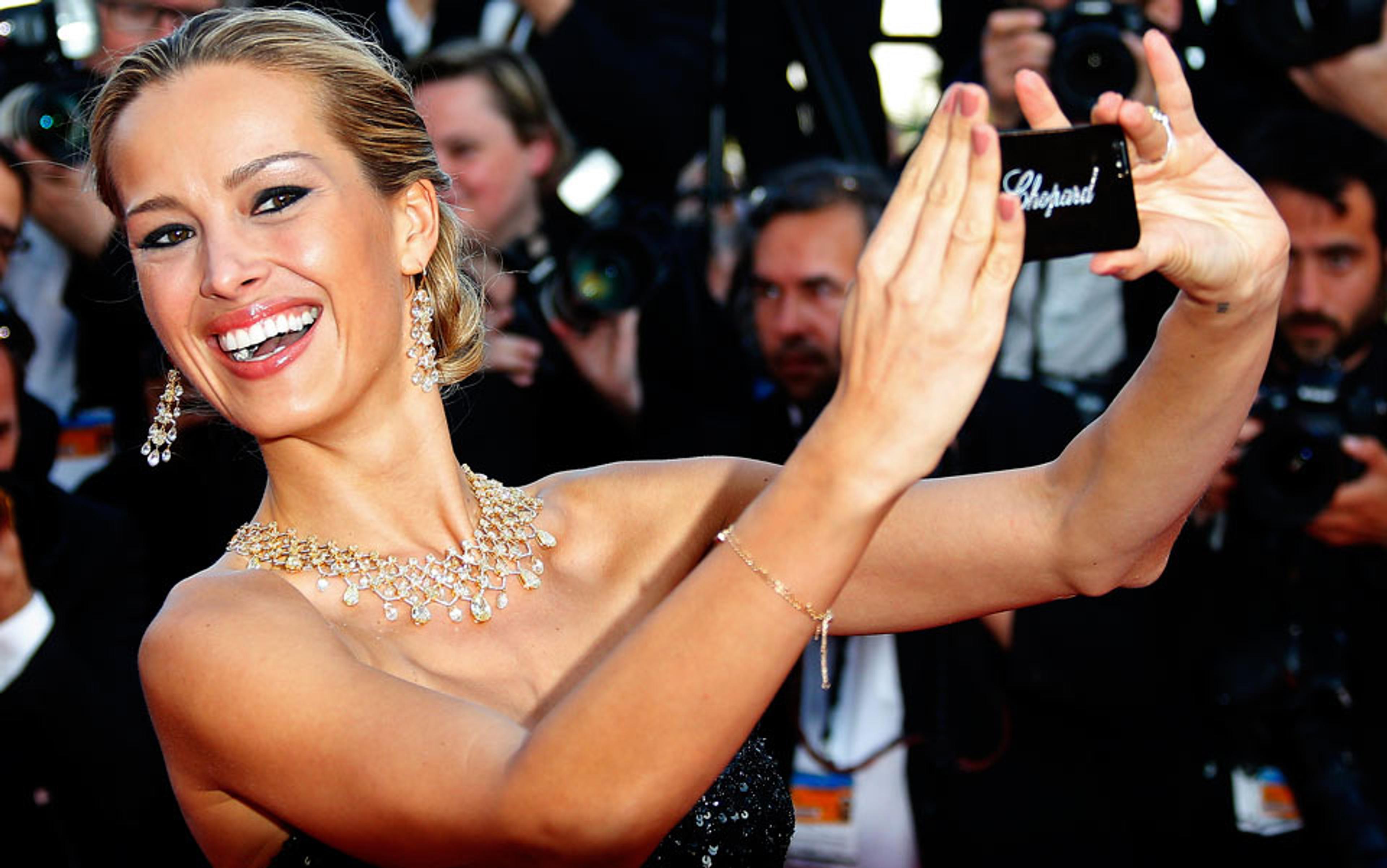In his novel The Picture of Dorian Gray (1891), Oscar Wilde teased: ‘[T]here is only one thing in the world worse than being talked about, and that is not being talked about.’ When he wrote those words, Wilde was at the pinnacle of his fame – and the beginning of a romantic scandal that would make him infamous. Frequently disparaged but equally admired for his provocative prose and flamboyant posturing, it is not surprising that Wilde would attract public attention by his controversial love affair with Lord Alfred Douglas and his impassioned courtroom defence of a ‘love that dare not speak its name’. It was not the first time, nor would it be the last, that Wilde’s larger-than-life personality eclipsed his professional reputation. One of the period’s most eccentric, charismatic and recognisable figures, Wilde experienced, more fully than most, the privileges and perils of being talked about. That is to say: Wilde knew well the power of celebrity.
And what is that? Why do we think of Wilde as a celebrity but not, say, Sir Isaac Newton? What exactly is celebrity, and when did celebrity as we know it emerge? How does celebrity differ from other categories of recognition such as fame or renown?
Celebrity distinguishes itself from other forms of public approbation because it centres on the individual personality. In their seemingly immortal perfection, celebrities offer us escape from the mundane, they entertain us, they give us pleasure or help us express our pain. In their all-too-human imperfection, they reassure us about our own shortcomings, foster a sense of belonging, and remind us that struggle is simply a condition of the human experience. Celebrities reflect our personhood – they show us who we are. But they also charm us with illusion, showing us whom we want to be.
The origins of celebrity are so contested because there are vastly different definitions of the term. It has become somewhat commonplace, for instance, to substitute ‘fame’ for ‘celebrity’ and vice-versa. But by using these words interchangeably, we ignore the particular historical contexts through which they evolved. Derived from the Latin fama, fame was first connected, through Virgil’s epic poem the Aeneid, to Roma, the goddess of rumour and spreader of news who used ‘her wings and her multiple mouths to tell all’. The word fame passed through Old French and Middle English to connote, by the 13th century, an individual’s public estimation, and by the 14th century, one’s popular acclaim.
Concerned as fame was with the heroic actions and meritorious deeds of charismatic heroes and so-called Great Men, it became a status reserved for the exceptional few: Alexander the Great, Charlemagne, Marco Polo, Plato, Aristotle, Leonardo da Vinci, Jeanne d’Arc, and so on. But fame also concealed a sinister sibling in the shadows, waiting in the wings to take centre-stage: the infamous. Across time, a litany of despots, criminals and wrongdoers, from Nero, Caligula, Attila the Hun, Jesse James and the Marquis de Sade, down to Rasputin, Mata Hari and Charles Manson, would rival the venerated for popular attention. Spawning narratives that titillated and terrorised a public fascinated by the dark side of human nature, the infamous loomed large in the collective imagination. As renegades, deviants and rogues, notorious villains articulated the sardonic and enlivened the macabre.
More ambiguous than fame and infamy is celebrity, which derived from the Latin celebrem, a word that implied both the celebration and the potential ‘crowding’ (perhaps we would say ‘mobbing’) of an individual. Fame could be bestowed upon an individual because of her good deeds but also because of her elevated hereditary position: the queen was famous simply because she was queen. Relying as it does upon a measure of external scrutiny, however, celebrity implied a reciprocity between the esteemed and the public that made its conferral less a designation and more a process of negotiation. Unlike ‘fame’ and ‘renown’, which connoted respect and reverence, ‘celebrity’, coming into popular use in the 18th century, aroused suspicion. It strove for legitimacy and struggled against critiques of excess and superficiality. Celebrity was collectively constituted and mediated in ways that fame was not. Fame needed a notable person; celebrity required a judicious audience.
As the idea of fame evolved, widening to make room for the infamous, it was less frequently linked to a specific act, and more often attached to a specific individual, or at least to a particular idea of the individual. By the 19th century, the famous person, valued for her paradoxical ability to be both exceptional and imitable, was created not only through achievement or birth but also through publicity. Privileging the appearance of individuality over its expression, and taking into account how the celebrated was seen by the public, celebrity, like fame and infamy, also insinuated a public figure for whom image and identity, style and substance, were inextricably interwoven.
Once fame acquired these trappings, however, what differentiated it from celebrity? What distinguished, for instance, John Stuart Mill, Charles Darwin and Florence Nightingale from Lord Byron, Franz Liszt, Thomas Edison or Sarah Bernhardt? All of these figures were well-known in the 19th century; all experienced fame; all were ‘talked about’. And yet, the former did not garner the same degree of media attention, encourage the same level of commodification (product endorsement, image circulation, autographs) or precipitate the same cults of personality as the latter. The former had followers and devotees; the latter had fans. The former invited conversation; the latter incited controversy. The former attracted attention; the latter lived for it. The difference between fame and celebrity was becoming one of degree rather than kind.
The same mechanised age that threatened to alienate the individual also brought strangers closer to one another
Edison quite literally illuminated the world, while Byron, Liszt and Bernhardt achieved acclaim in the fields of literature, music and theatre, respectively. Unlike many of their equally accomplished contemporaries, some of whom have been long forgotten, they actively cultivated popular opinion, garnering as much attention for who they were as for what they did. By creating and performing a personality, a public persona that was unique but – crucially – reproducible, they distinguished themselves during their own lifetimes, and ensured their posthumous legendary status. As master manipulators of a burgeoning mass press, savvy self-promoters and even nascent capitalists, figures such as the magician Edison, ‘the fantastic’ Bernhardt, the magnetic Byron and the veritable rock star of his age, Liszt, engendered as much as embodied modern celebrity.
Pointing to such examples, some scholars have located the birth of celebrity in the late-18th and 19th centuries. They have argued that it was this period that not only produced exceptional personalities but also provided the structural conditions necessary for facilitating the development of a fully realised celebrity culture. Reflected in the new field of biography, the popularity of portraiture, the proliferation of memoirs, and the appearance of human-interest stories and obituaries in daily newspapers, this period fostered a new concept of the ‘self’ that championed the individual. With an expanding public sphere, where more people than ever before could read and take part in the public conversation through the breakdown of entrenched political and social hierarchies, any individual (theoretically at least) could aspire to greatness. Ordinary men and women were increasingly aided in this venture by technological innovations that stimulated new modes of communication, such as the introduction of largescale print culture and image reproduction, as well as by the forces of industrial capitalism that initiated widespread urbanisation, mechanised work and time, encouraged the commercialisation of leisure, and generated new forms and measures of status.
Famous individuals had long gained recognition within conventional centres of influence such as courts, salons and the ivory towers, and for centuries their likenesses were reproduced in book engravings, in sculpture, on medals and coinage, and in ceramic figurines. But these images circulated primarily among the elite, who could afford to commission, purchase and collect them. Mechanised production democratised access to such images. By the late-19th century, anonymous spectators and faceless consumers (as opposed to patrons and close friends) encountered images of the exceptional in newspaper caricatures, on porcelain cameos and inexpensive pocket portraits, on stylised photo cards (cartes de visite), and life-sized posters that plastered urban boulevards and decorated major thoroughfares.
The same urban, mechanised age that threatened to alienate the individual also brought strangers closer to one another than ever before, both geographically and visually. Not only was it literally easier to be seen – on the streets, in new spaces of leisure, in the ever-expanding visual culture of photographs and newsprint – it also became easier for individuals to become known. Filtered through the media and often curated by the public figure herself, the image that emerged from these commercial agents was carefully stylised, intended to promote not necessarily the person but the personality. This personality, in turn, became the brand through which the previously unknown individual would become known to larger, even more anonymous publics.
Perhaps no one mastered the phenomenon of creating and publicising 19th-century personalities more effectively than the American showman P T Barnum. A clever entrepreneur and shrewd promotions man, Barnum used his museums, circuses and travelling-company productions to launch the careers of newcomers such as the two-foot-tall ‘General Tom Thumb’ and the opera singer Jenny Lind, whom he billed as ‘the Swedish Nightingale’. Rather than focus solely on talent, Barnum exploited Thumb’s small stature and showcased Lind’s sweet temperament and foreignness. He then used the media and the marketplace to transform both performers into international sensations – into celebrities.
Through various forms of mediated representation, audiences gained unprecedented access to the secret lives of public figures. This access cultivated the false familiarity between the public figure and her audience that would later become the cornerstone of modern celebrity culture. As public figures became increasingly ‘known’, through gossip journalism, manufactured publicity and product endorsement, as well as through the mass circulation of their images and stories, they also became marketable commodities in their own right. In this role, audiences could not only get to ‘know’ a famous person, they could purchase, consume and possess a piece of her as well.
Many scholars have used the point that celebrity requires consumption to argue for its origins in the 20th century. However, all the essential features of celebrity culture were developed in the 19th: look at Barnum’s promotion of ‘Lindomania’ (predating Beatlemania by 100 years), the popularity of collecting and trading portraiture cards, or the celebrity endorsements of a growing number of products, from tea and mustard to cosmetics and hair creams, all accompanied by testimonials and images of recognisable public figures. Locating the birth of celebrity in an earlier period marks a significant point of departure from much late-20th-century scholarship that correlated celebrity with cinema, and aligned it with the emergence of the Hollywood star. The 19th century set the stage for modern celebrity; the 20th century, through the mass media, amplified celebrity beyond all expectation. Hollywood did not invent celebrity; it simply gave us more of it.
As the English scholar Richard Dyer elucidated in his canonical text Heavenly Bodies (1987), the Hollywood star captured her audience precisely because she was nothing and everything like us:
Stars articulate what it is to be a human being in contemporary society; that is, they express the particular notion we hold of the person, of the ‘individual’ … they articulate both the promise and the difficulty that the notion of individuality presents for all of us who live by it.
As mythic figures – what the French philosopher Guy Debord in The Society of the Spectacle (1967) referred to as the ‘spectacular representation of a living human being’ – screen stars offered ordinary men and women an escape from the mundane, an aspirational model of the good life, and a reprieve from the stresses and anxieties of modernity.
Mass-manufactured through public-relations firms, corporate motion-picture studios and the entertainment press, enchanting Hollywood stars came to occupy a privileged place in the collective imagination, circulating around the globe. They fuelled the fantasies of common folk who wanted to be with them, who wanted to be like them, and even some who wanted to quite literally be them. Who did not desire old Hollywood’s glamour mavens Greta Garbo, Elizabeth Taylor or Claudette Colbert, or dare compare themselves to its modern-day sirens Emily Blunt, Margot Robbie or Gal Gadot? Who could possibly emulate its dashing leading men – Rock Hudson, Cary Grant or Paul Newman – or wear the badge of heartthrob as well as Idris Elba, Dwayne Johnson or Ryan Reynolds?
Whereas many megastars seem beyond our reach, some of them seem more authentically like us. The down-to-earth girl-next door (Jennifer Aniston, Amy Schumer or Meg Ryan) or the dependable good guy (Will Smith, Colin Firth or Ryan Gosling) make us believe that perhaps we too can possess a certain star quality. Through press coverage of their personal lives (from marriage and divorce to success and scandal; from what they eat and where they shop to whom they know) and the commercial distribution of intimate photographs, personal memoirs and sensationalised tabloid exposés we learn that all of these celebrities, no matter how bright their star, are also ‘just like us’. They are simply ordinary men and women who through luck, grit and circumstance transformed themselves into someone or something special.
Whether we try to keep up with or keep away from the Kardashians, we remain entangled in celebrity’s snare
Examining the ways that media transmission heightens the illusion of knowability – especially in the age of the internet – scholars who locate celebrity’s origins in the era of Hollywood underscore how the mass media and celebrity culture produce one another. Especially after the collapse of the studio system in the 1950s, when stars were no longer contractually beholden to a particular company nor dependent on a studio’s public-relations division, the industrial manufacture of celebrity intensified. In the 1970s and ’80s, People Magazine, Entertainment Tonight and talk shows such as Oprah made film stars and television actors, athletes and pop stars, comedians and fashion models, into daily news. By the 1990s, as more Americans embraced cable television, channels used new genres and personality types to establish their own brands and, in so doing, they multiplied the opportunity for celebrity. From this point forward, celebrity chefs, financial advisors, doctors and judges, as well as reality TV parvenus from lovelorn bachelors and wayward Teen Moms to hopeful music Idols, would give the ever-expanding global entertainment media something to talk about.
In the 21st century, the media offers audiences greater access to information about public figures (increasingly, in real time) thus advertising the celebrity, boosting her visibility and confirming her relevance. The featured celebrity, in turn, generates revenue for media corporations and ensures the viability of websites by increasing site traffic and securing the requisite number of ‘clicks’. Moreover, through the media, the celebrity is packaged as a particular type – a trendsetter, a role model, a rebel, a mirror for the status quo – becoming both a cultural broker and a social force in the process. In this role, the celebrity plays simultaneously to collective fantasies and to individual desires, she stimulates the imagination but also invites vicarious identification, she elicits intrigue as an object of curiosity, she courts familiarity despite her distance from her audience, and she reasserts her exceptionalism even as she appears to be just like us.
Celebrity culture continues to elicit contradictory responses. On the one hand, entangled with older systems of fame production and enmeshed within the 20th-century star system, contemporary celebrity, like its predecessors, confuses the authentic and the artificial; draws attention to the unique, the different and the talented; and captures a fleeting moment, providing a snapshot of a shared social reality as fragile and ephemeral as celebrity itself. As aspirational avatars, idolised icons and vessels of collective memory, celebrities permeate all aspects of modern life. On the other hand, celebrity also inspires derision, even disdain. It arouses animosity or, at the very least, fosters ambivalence. Redirecting the Frankfurt School’s scathing Leftist critique of the exploitative culture industries taking root in the West after the Second World War, the historian and political conservative Daniel Boorstin in the 1960s cynically characterised celebrity as an artifice perpetrated and sustained by an equally vapid and manipulative mass media.
Moreover, in the era of reality TV casts, social-media influencers, YouTube personalities, bloggers, vloggers and Instagrammers, it would seem that anyone might become, in Boorstin’s perhaps prophetic words, ‘known for their knownness’. Indeed, whether we regard ourselves as indifferent publics or eager spectators, by continuing to debate which bodies are worthy – whether by endeavouring to keep up with or preferring to keep away from the Kardashians – we remain entangled in celebrity’s snare. Whether we like it or not, those fascinating, reproducible individuals known, if only for their knownness, continue to give us something to talk about.
But why do we need something or someone to talk about in the first place? Where does all this talking get us? What does our fascination with celebrity reveal about how we see ourselves? Perhaps a celebrity might help us grapple with these questions. In her acceptance speech for Best Actress Oscar for the Johnny Cash biopic Walk the Line (2005), Reese Witherspoon said that she’s simply trying to ‘make work that means something to somebody’. Perhaps celebrities matter so much to us because, like Witherspoon, we all want nothing more than to matter.






